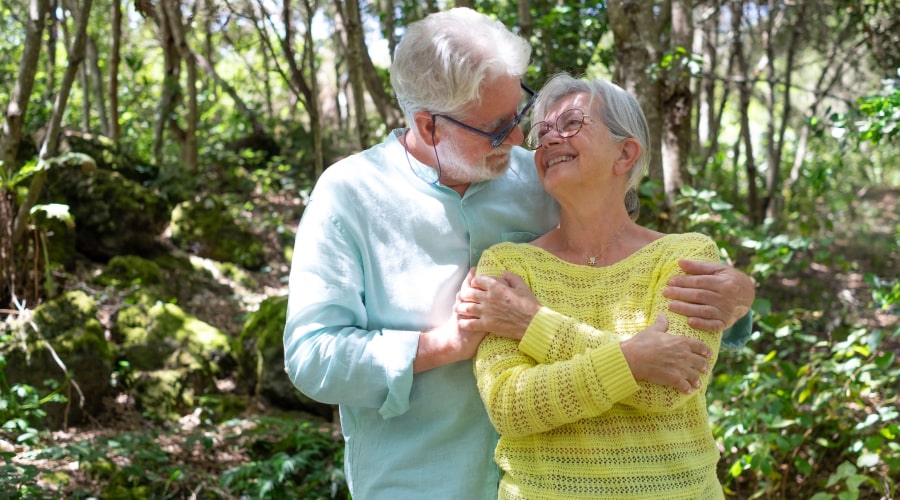
Across the country, 25% of people say limiting their carbon footprint is very or extremely important to them. In Florida, 68% of residents agree that more should be done to support sustainability and eco-friendly policies.
As families look for more sustainable options in Florida, direct cremation in St. Petersburg has become an increasingly popular option. Florida has one of the highest rates of cremation in the country, topping 72% in recent surveys, offering a dignified farewell and minimizing environmental impacts.
Environmental Benefits of Direct Cremation
Direct cremation is the most straightforward option. It includes the immediate cremation at the end of life, without a formal viewing or funeral service. Simple and cost-effective, it provides significant environmental benefits—especially when compared to a traditional funeral service and burial.
Land Conservation
Traditional burial consumes significant land resources. A single burial requires about 10 square feet of cemetery space and ongoing maintenance. This becomes a permanent allocation of land that cannot be used for other purposes.
Direct cremation eliminates the need for a burial plot and supports land conservation efforts.
Reduced Resource Consumption
With direct cremation, you use minimal resources. There is no need for ornate caskets or rare woods. Cremation is done in simple cardboard or wooden enclosures, typically made from recyclable materials.
Cremation also eliminates the use of harmful chemicals such as those used in embalming, preventing potential contamination risks.
Lower Carbon Footprint and Waste Reduction
While cremation does use energy, there are fewer transportation requirements and minimal logistics. Compared to funeral service planning, energy and fuel consumption for transportation and attending funeral services are limited.
Direct cremation is not a carbon-neutral process, however. Cremation requires significant energy, and carbon emissions are generated. Some providers for Florida direct cremation in St. Petersburg, FL, offer additional ways you can promote eco-friendly practices. For example:
- Using biodegradable urns that break down naturally over time
- Using recycled materials for cremation and storing remains
- Scattering remains in natural settings
Honoring your loved one at a traditional funeral service also produces significant waste. Printed material, single-use items, and floral arrangements have limited re-use.
Many families also choose to honor their loved one and support sustainability by:
- Planting trees, gardens, or memorial parks
- Replacing printed materials with digital memorials
- Using urns that can be planted with seeds
Other Environmentally Friendly Options for End-of-Life
There are other options available.
Natural Burials
Natural or green burials return the body to Earth in the most natural form possible. There are no embalming chemicals used. No caskets. No burial vaults. Bodies are placed in a biodegradable shroud and buried, which allows for decomposition to occur naturally.
Such burials need to occur in specific places, such as a cemetery or preserve designated for green burials. There are only a few in the state of Florida and the closest to the Tampa-St. Pete area is the Heartwood Preserve Conservation Cemetery & Nature Preserve in Trinity.
You can find other green cemeteries in the state through the Green Burial Council.
Water Cremation
Water cremation (Alkaline hydrolysis) is an alternative to using heat for cremation. This process produces about 75% lower carbon emissions than flame cremation. The body breaks down more naturally and produces a sterile liquid byproduct that can be returned to the environment.
There are a few funeral homes that offer this service in the area as an alternative to a Florida direct cremation in St. Petersburg or Tampa.
The Neptune Memorial Reef
The world’s largest manmade reef is also the world’s first underwater cemetery and it’s located in Florida, 40 feet underwater in Biscayne Bay near Miami. Families can have cremated remains mixed with water and turned into placements at the reef. The Neptune Memorial Reef helps preserve coral reefs, home to various types of sea life.
Whole Body Donation
You may want to consider a whole body donation. Medical students, researchers, and scientists use donated bodies to train, test treatment therapies, and understand diseases. When a loved one passes, United Tissue Network will place the donated body with a reputable medical research or educational facility and pay for direct cremation once the research has finished.
This provides a free cremation for families, making it both a cost-effective and altruistic alternative.
To receive St. Petersburg cremation through UTN, start the online whole-body pledge process.
